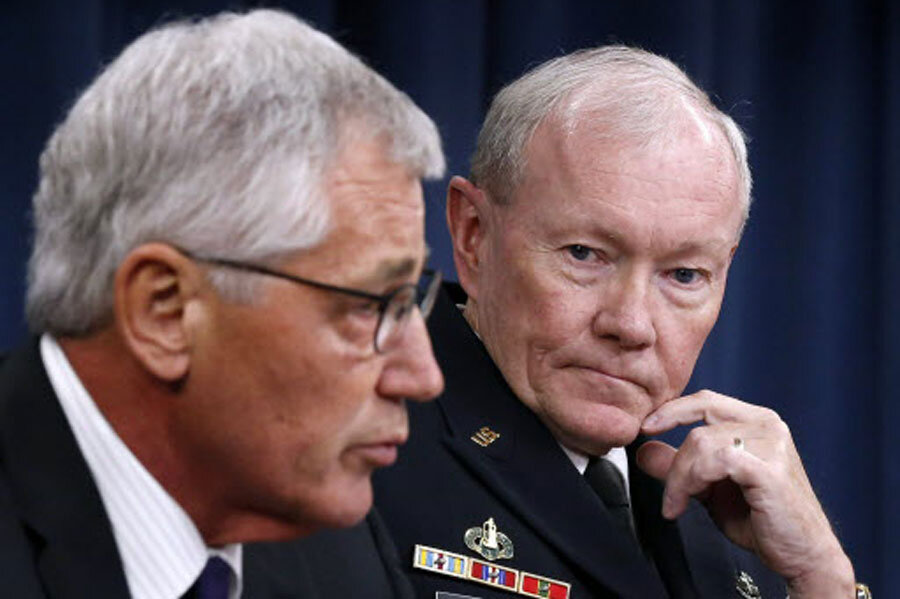Fight against Islamic State: what Pentagon officials say are challenges ahead
Loading...
| Washington
It will take between 12,000 to 15,000 trained fighters with the moderate rebel forces to begin to recapture territory lost to the Islamic State (IS) in Syria, America’s top military officer warned Friday.
The projection came in a Pentagon press conference that gave an update on the campaign against IS, which is also known as ISIS or ISIL, in both Iraq and Syria.
Not all the news was as sobering, however. Just minutes after the estimate of necessary fighters was put forward, Defense Secretary Chuck Hagel took a call from his counterpart, British Defense Secretary Michael Fallon, who phoned with the news that the British Parliament had just voted 524 to 43 to join the air campaign in Iraq.
Indeed, the US military’s effort in Iraq is drawing in a wide array of partners, including the governments of Belgium, Denmark, and the Netherlands.
The efforts in Syria, however – where the United States began airstrikes earlier this week – promise to be far more complex.
The Pentagon’s campaign in Syria requires building a “credible coalition,” Gen. Martin Dempsey, chairman of the Joint Chiefs of Staff, said Friday in the briefing with reporters. It will also involve disrupting IS financing and trying to stem the recruitment of IS fighters. And it will require an information battle – “exposing ISIL’s false narratives” and “stripping away the cloak of religious legitimacy behind which they hide,” General Dempsey said.
For now, the US military’s bombing campaign in Syria – which has included 43 airstrikes conducted with Arab partners – is designed to take out IS’s command-and-control centers, logistics hubs, and key infrastructure in the country.
But airstrikes by themselves will not be enough, Secretary Hagel said. “No one is under any illusions – any illusions – that airstrikes alone will destroy ISIL.” He added, “This will not be an easy or brief effort.”
Dempsey stressed the same point. When asked if there would be “boots on the ground” in Iraq or Syria, he replied: “The answer is yes.”
But he emphasized that these troops do not necessarily have to be American: They can be Iraqi or Syrian as well.
Yet training such fighters is no quick task. For 5,000 troops in Syria, it would take about five months to first vet them, and then eight to 12 months to actually train them, Dempsey says.
There are 26 of 50 Iraqi brigades that can be retrained (the other 24 are “untrainable,” according to Dempsey, because of their sectarian nature). US military trainers have begun working with the brigades’ leadership “to ensure that what occurs on the ground is their campaign,” he said, “not our campaign where we drag them along for legitimacy.”
His point about ground troops came up in recent congressional testimony, too, when much was made of a civil-military rift. Dempsey had told lawmakers that if he felt the US campaign in Iraq or Syria required ground troops, he would not hesitate to recommend them.
President Obama has said there will not be US combat forces on the ground in Iraq or Syria.
Pentagon officials have pushed back against the notion of a divide. “That was played out over the course of the week as if there was a big rift,” Lt. Gen. David Goldfein, director of the Joint Staff, said at an event Thursday. “I would argue that that is exactly the way the process ought to work. That’s the reason the president has senior military commanders and a military adviser – to give military advice.”
Civilian leaders “have every right not to take that advice,” he added, “but they have to hear it.”







